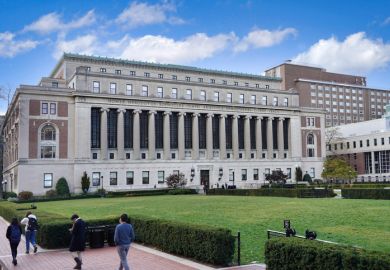Government accounting rules on student loans “are driving policy” in higher education, including making a sale of the multibillion-pound loan book look good even if it represents a long-term loss, a report published by the Higher Education Policy Institute warns.
The report, by Andrew McGettigan, also argues that a recent agreement with the Treasury would force the Department for Business, Innovation and Skills to find extra money to cover the costs if student loan repayments fall below estimates.
This is “most likely” achievable “by restricting maximum tuition fees [to £9,000] for the majority of courses at the majority of institutions and by toughening up repayment terms for borrowers”, he said.
In The Accounting and Budgeting of Student Loans, which was written after off-record discussions with Treasury and BIS officials, Dr McGettigan says: “If we are making policy fit the accounting without critical scrutiny, as seems to be happening, then something has probably gone wrong.”
The coalition government’s decision to scrap the bulk of direct public funding for university teaching and to replace it with loan funding and fees of £9,000 relied on government accounting conventions.
Loan outlay and repayments are “excluded from the expenditure and receipts that determine the current measure of the deficit”, Dr McGettigan notes. But loans do affect the main measure of public debt, the public sector net debt (PSND).
The value of outstanding student loans in today’s terms is projected to peak at £330 billion in the 2040s.
Accounting conventions that exclude the positive side of loans (future repayments) and include only the negative side (government borrowing to fund loans) mean that the impact of student loans on the PSND is “overstated”, Dr McGettigan says.
Keen to cut the PSND, the government is attracted to a student loan sale that offers cash now, even if it gets less than the value of future repayments, Dr McGettigan argues.
He says that the “treatment of student loans in the national accounts is…set up in such a way as to favour an undergraduate finance model that replaces grants with loans and then sells those loans on”.
Estimates of the portion of loans that will never be repaid – the resource accounting and budgeting charge – have been rising since 2010.
A “major fiscal challenge” for BIS was averted in 2013-14 via a retrospective change to accounting rules that allowed the costs of higher RAB estimates “to be smoothed out over the following three decades”, Dr McGettigan says.
He adds that BIS now has permission to use an additional section of budget, earmarked for unpredictable events, to cover sudden changes in forecast loan repayments. But it must still recoup the money somehow.
The Treasury has set a target RAB charge on post-2012 loans of 36 per cent, below the current estimate of 45 per cent. If the RAB is above the target, “the new procedure kicks in”, Dr McGettigan says.
In a press comment on the report, he argued that hitting the RAB target was equivalent to BIS saving “£1 billion for each year’s loan issue”, suggesting that asking graduates to pay more for loans was a likely option for the government.
BIS declined to comment on the report.
Register to continue
Why register?
- Registration is free and only takes a moment
- Once registered, you can read 3 articles a month
- Sign up for our newsletter
Subscribe
Or subscribe for unlimited access to:
- Unlimited access to news, views, insights & reviews
- Digital editions
- Digital access to THE’s university and college rankings analysis
Already registered or a current subscriber? Login





